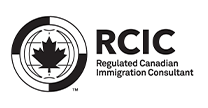
Author: MD SORIFUZZAMAN, RCIC-530681
Canada’s commitment to keeping families together is evident in the Family Reunification Program. This program, a critical component of the Immigration and Refugee Protection Act (IRPA), enables Canadian citizens and permanent residents to bring certain relatives to Canada as permanent residents.
Key Principles
Family reunification stands as one of the three pillars of permanent immigration in Canada, alongside economic immigration and refugee protection. The program’s core objective, as reflected in the IRPA, is to ensure families are reunited in Canada. Central to this process is the authenticity of the relationship between the sponsor and the applicant, whether they’re a spouse, partner, or other relative.
Eligibility and Categories
Foreign nationals can apply from abroad (the Family Class) or within Canada (the Spouse or Common-Law Partner In Canada Class). Eligible relatives for sponsorship include:
- Spouses, common-law partners, and conjugal partners
- Parents and grandparents
- Dependent children (primarily under age 22)
- Other relatives in special circumstances (e.g., orphaned relatives under 18, last remaining relative)
Sponsor Requirements
Sponsors must be Canadian citizens, permanent residents, or status Indians residing in Canada, be at least 18 years old, and commit to supporting their sponsored family for a specified period.
Program Impact
The Family Reunification Program complements other immigration streams and can be a key factor in attracting highly skilled immigrants. While spouses and partners contribute significantly to the Canadian economy, parents and grandparents often provide essential support, such as childcare, enabling their sponsors to work or improve their skills.
Current Statistics
In 2022, the program accounted for 23% of all permanent immigration to Canada. The top source countries were India, China, and the Philippines, comprising 70% of the newcomers under this program.
Categories and Service Standards
The program has two core categories:
- Spouses, Partners, and Dependent Children: 66% of the family class with a service standard of 12 months for overseas processing.
- Parents and Grandparents: 28% of the family class, subject to annual intake limits and no specific processing standard.
Recent Developments
Innovations like file digitization and the use of advanced analytics have been implemented to accelerate processing times. Notably, as of May 26, 2023, IRCC has introduced faster temporary resident visa processing and the issuance of open work permits to spousal applicants and their dependent children in Canada.
This overview of the 2023 IRCC Minister Transition Binder emphasizes the importance of family reunification in Canadian immigration policy. Stay updated with GuideMeImmigration.com for more insights and assistance on navigating Canada’s immigration programs.
[Disclaimer: The information provided in this blog is for general informational purposes only. All information on the site is provided in good faith, however, we make no representation or warranty of any kind, express or implied, regarding the accuracy, adequacy, validity, reliability, availability, or completeness of any information on the site. Please consult with a professional for specific advice.]
© 2023 GuideMeImmigration.com. All Rights Reserved.







